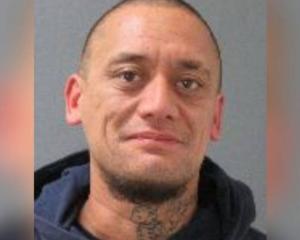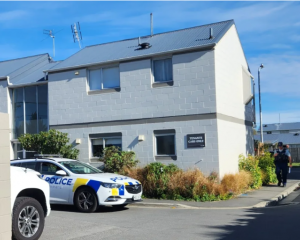
Garry Moore was rattled by three mini-strokes, or Transient Ischemic Attacks (TIA), between May 10 and 11 last year.
His memories are somewhat hazy now, but the first struck on a Friday night while he was at his computer and suddenly couldn’t move the mouse with his left hand.
“I thought it was strange, but I really had no idea what it meant or what it would lead to,” Moore said.
He has little memory of the second mini-stroke, but the third hit the hardest while visiting his daughter and son in-law’s home about 10am the following day.
“I was in the hall and I just slumped against the wall. I just couldn’t hold myself up.”
Despite these warning signs, Moore didn’t realise the ‘big one’ was just days away.
After regaining his composure, Moore’s wife, Pam, drove him to the 24-Hour Surgery on Madras St to get checked out.
After being assessed, an ambulance was called to take him to Christchurch Hospital for scans.
There, a doctor warned Moore he had about a 20% chance of having a stroke after the TIAs.
“I’m an optimist and an accountant, so I said ‘then there’s an 80% chance of me not having a stroke’.
“My wife told me it doesn’t work that way apparently.”
Despite being urged to rest, Moore kept busy, including joining an RNZ news panel on the Tuesday night before having a stroke in his sleep.
A small blood vessel in Moore’s brain burst, mostly affecting the left side of his body.
“Some of my mates would argue I’ve used the left-hand side too much anyway,” he joked.
He woke the next morning in a dazed and confused state.
“I got up and I was sort of drunken in my movement,” Moore said.
“You just think, what the f**k is happening here.”
He alerted Pam to his condition and as a nurse she quickly recognised the signs of stroke and called an ambulance.
After being assessed and diagnosed at Christchurch Hospital, Moore was transferred to the stroke ward at Burwood Hospital to begin his recovery journey.
“It’s like falling off a cliff or something. I’d never had any big health problems in my life and just all of a sudden I couldn’t stand, I couldn’t walk,” he said.
As Moore started his recovery, his mind remained clear and his speech was mostly unaffected.
In hospital, Moore had to relearn how to walk and move his left side, undergoing intense physiotherapy workouts three to four hours a day, five days a week.
“Never worked out so much in my life. I belonged to a gym at one stage and I gave it up because it was boring. I preferred riding my bike,” he said.
Moore was released from hospital after a month and has since been attending specialised stroke recovery exercise classes.
The classes, held twice a week at Bishopdale Recreation Centre, offer a supportive environment where Moore works alongside other stroke survivors.
“The beauty of this gym is there’s a whole lot of people my age who have all had strokes. We all support and help each other. It’s quite inspiring,” he said.
“It’s all about strengthening the left side of my body and I can feel the difference,” said Moore.
One crucial exercise was lifting his left arm up and lowering it in a controlled manner.
“It was sort of hopeless and then one day I could do it in a very wobbly way. I can control it completely now,” he said.
To track his progress, Moore kept a record of all his exercises and found he had made 1910 attempts at lifting and lowering his arm before finally succeeding.
He says stroke patients cannot undertake recovery without outside support, in his case from family and friends.
“We got hundreds of letters and cards from people. The goodwill from people was staggering to me,” Moore said.
“It was like I died.”

“Pam has been with me every step of the way. She was there every day at the hospital. I really couldn’t have done it without her.”
Moore has no family history of strokes and before the TIAs there were no warning signs.
When tested the weekend before the stroke, his blood pressure and cholesterol were only a little above normal levels.
“I’ve lived a very healthy life. I biked everywhere. I walked everywhere. There had never been any indications or warnings of the stroke.”
Moore believes his “full-on” lifestyle and schedule may have contributed to the stroke.
“I lived life at 100 miles an hour.”
Moore was mayor from 1998 until 2007 and has four children and four grandchildren.
Even after deciding not to run for re-election in 2007, he maintained a busy schedule.
He was involved in different political campaigns such as opposing the Labour Government’s Three Waters programme and the sale of council assets.
“It’s been pretty hard to slow down but I’ve had to.”
Moore can no longer cycle due to stroke-induced balance issues.
“It’s one of the things I find the hardest actually, because all my life I’ve been a bike rider.”
He remains hopeful he may get back on a bike in the future, possibly with a three-wheeler.
In the meantime, he walks for exercise and uses a walking stick for longer distances.
During Moore’s time as mayor, he became adept at public speaking but he has needed to relearn the skill.
“I used to stand up and give a speech with no notes. Now crowds can give me a bit of a fright.”
Moore isn’t spending his time worrying about the risk of another stroke.
“I’m a glass two-thirds full kind of person, not half. So I don’t give any time to that sort of thing.”
Six weeks after the stroke, Moore had a seizure in his sleep which he cannot remember.
“I woke up with my wife and son and ambulance people above me shoving a needle in my arm.”
He is not allowed to drive since the seizure, which has been a major life change.
A vintage car enthusiast, Moore moved from Palmerston North to Christchurch in the 1970s because the Vintage Car Club was founded in the city.
He still has a “Chrysler-like” vintage car in his garage which he built himself between 1993 and 2004, determined to build his own open tourer.
Although he cannot drive the car, at least for the foreseeable future, Moore wants to start working under the bonnet again as his recovery continues.

“Of course we’ve all got to eat better, drink less and exercise a lot more.”
He recommends older people visit the doctor and get their blood pressure and cholesterol checked regularly.
Not sitting on his laurels, Moore has revived his political discussion group, the Tuesday Club.
The group meet fortnightly at the Smash Palace bar.
Alongside regular newsletters, the third meeting of the revived club happened last week with Dr Jane Shearer talking about her Christchurch-focused climate change novel Threads of Connection.
“We like having a place where people can debate and also encourage young people with an interest in local issues,” Moore said.
Unable to stay too far away from the political world, Moore is staying tuned for the local body elections in October.
Despite their ideological differences, Moore says Mayor Phil Mauger has “grown into the role” over his first term.
He has not yet formed a strong opinion on the mayoral contest between Mauger and city councillor Sara Templeton.
In ward elections, Moore is encouraging voters to pick the candidates who are “deeply involved” in advocating for their local issues.













